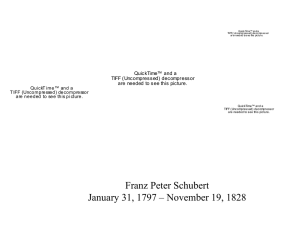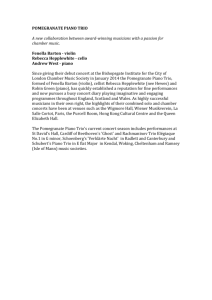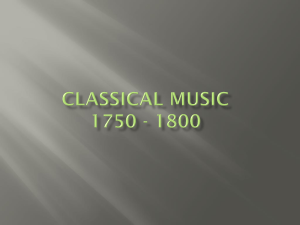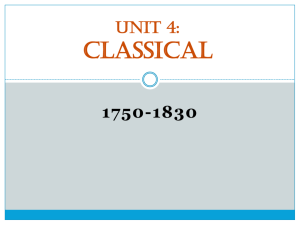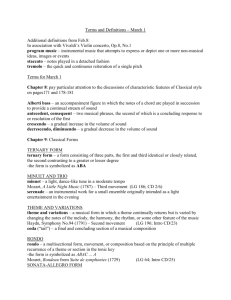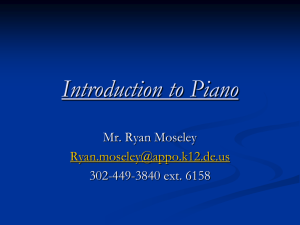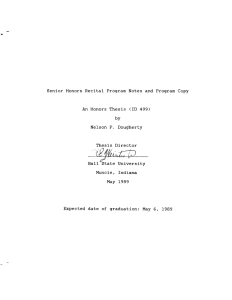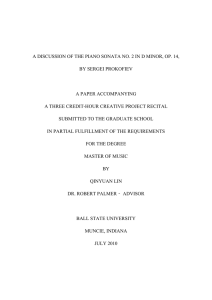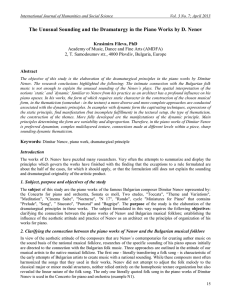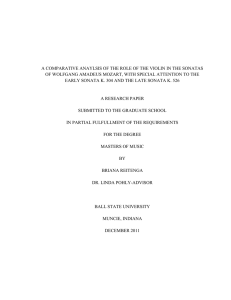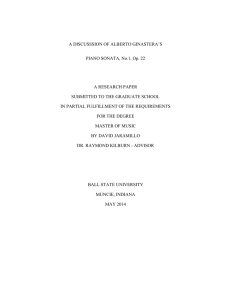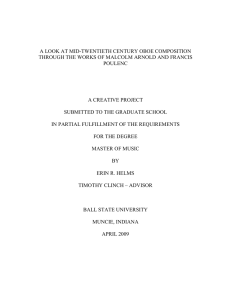MUH 2011 Chapter 11 slides (7e)
advertisement
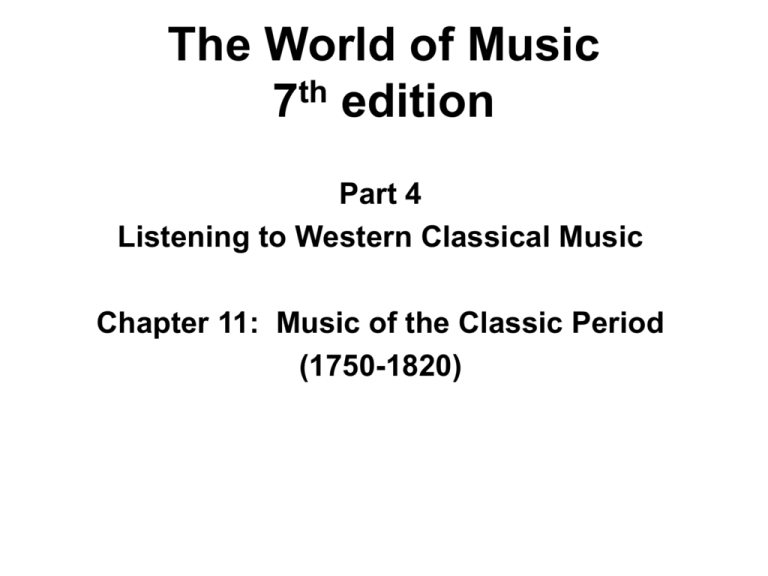
The World of Music 7th edition Part 4 Listening to Western Classical Music Chapter 11: Music of the Classic Period (1750-1820) Classic Period: Age of Reason • • • • • Emotional Restraint Balance Clarity Symmetry Clear/Precise Formal Structure • Simplicity Classic Period Musical Characteristics • Melody is Prime Concern – Homophonic Texture – Stepwise (Scalar) Melodies – Tonal and Diatonic • Obvious Cadences • Rhythm – Uncomplicated – Predictable • Decline/Disuse of Continuo and “Realized” Harmonies Instrumental Ensembles • Standard Orchestra – – – – – – – – – – – Violin I and II Violas Cellos Double Basses Flute I and II Clarinet I and II Oboe I and II Bassoon I and II Trumpets Horns Timpani • String Quartet – Violin I and II – Viola – Cello • Piano Trio – Violin – Cello – Piano • Piano Quintet – String Quartet – Piano Multimovement Works • • • • Sonata (4) Symphony (4) Concerto (3) Chamber Music • Typical Movements – I Fast: Sonata Form – II Slow: ABA or Theme and Variations Form – III Dance: Minuet (or Scherzo) and Trio – IV Fast: Rondo or Sonata Form Opera in the Classic Period • Ongoing Music • Continuous Drama • Recitative/Aria Accompaniment – More Complex – Enhanced the Voice – No Longer Totally Subservient Sonata Form • Exposition – Primary Theme in Tonic Key – Secondary Theme in Contrasting Key • Development – Composer’s Playground – Develops Themes from Exposition • Recapitulation – Primary Theme in Tonic Key – Secondary Theme in TONIC Key Theme and Variations Form • Begins with a Theme • Continues with Variations of Same Theme – – – – – – – Tempo Dynamics Articulations Tonality Mode Instrumentation Texture Minuet and Trio Form • Stately Dance • From Baroque Period • ABA Form – Minuet – Trio – Minuet • Many Parts of Each Section are Repeated Rondo Form • Begins with Ritornello (Returning) Theme • Ritornello Alternates with Contrasting Themes – Melody – Mood – Tonality • Common Structures – ABACA – ABACABA – ABACADA Franz Joseph Haydn (1732 – 1809) • Austrian • Logical Coherent Music (Predictable) • Served 30 Years with Prince of Austria (Prince Estherhazy) (1760-1790) • Afterwards, traveled to London and Vienna (Where he had tea w/Wolfie) prior to checking out… • Output – 104 Symphonies • A few were named by others, not Haydn – “London” Sym. #104 – “Surprise” Sym. #94 – “La Chasse” Sym.#72 – 35 Concertos • More famous = Trumpet – 82 String Quartets – 60 Piano Sonatas Cataloged by Anthony van Hoboken Wolfgang Amadeus Mozart (1756–1791) • • • • • • Austrian (Salzberg born) Child Prodigy – Started at age 5 – Father was Musician – Traveled Europe Sophisticated, Urbane Music Musical Nemesis?? = Antonio Salieri, an Italian who worked in Vienna about the same time as Mozart His story is told in Play and Movie Amadeus with a few dramatic modifications (“Too many notes!”) His work was catalogues by Ludwig Von Kochel (K. …) • Output (Partial list) – Many Concertos • 25 Piano • 7 Violin • Various Other Instruments – Clarinet, Horn (4), Bassoon – 23 String Quartets – 17 Piano Sonatas – 23 Operas • The Magic Flute • The Marriage of Figaro • Don Giovanni – Masses and a Requiem • Composed just prior to his own death..unfinished by Wolfie, but completed by his colleague,not student, Franz Xavier Sussmeyer (to what extent is debatable) – 41 Symphonies – Instrumental works (Divertimenti, Serenades, Dances, etc.) Ludwig van Beethoven (1770 – 1827) • • • Transitional Composer (to Romantic Period) Three Periods – Early • Education • Formative – Middle • Prolific • More Classic Works – Late • Fewer Works • Predicted Romantic Style • Lost hearing during this period Did not seek Court employment as others of this time • Output – 9 Symphonies – 5 Piano Concertos – 1 Violin Concerto – 32 Piano Sonatas – 16 String Quartets – 9 Piano Trios – Many Concert Overtures – 1 Opera (Fidelio) • Immortal Beloved and Beethoven Lives Upstairs recent movies of Beethoven’s life


